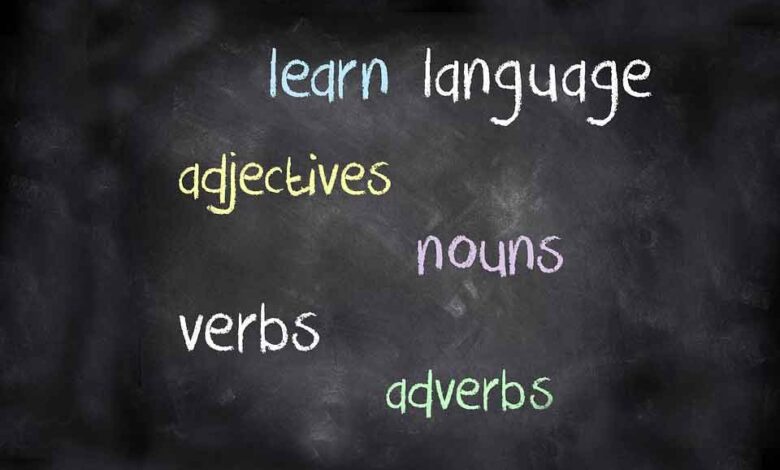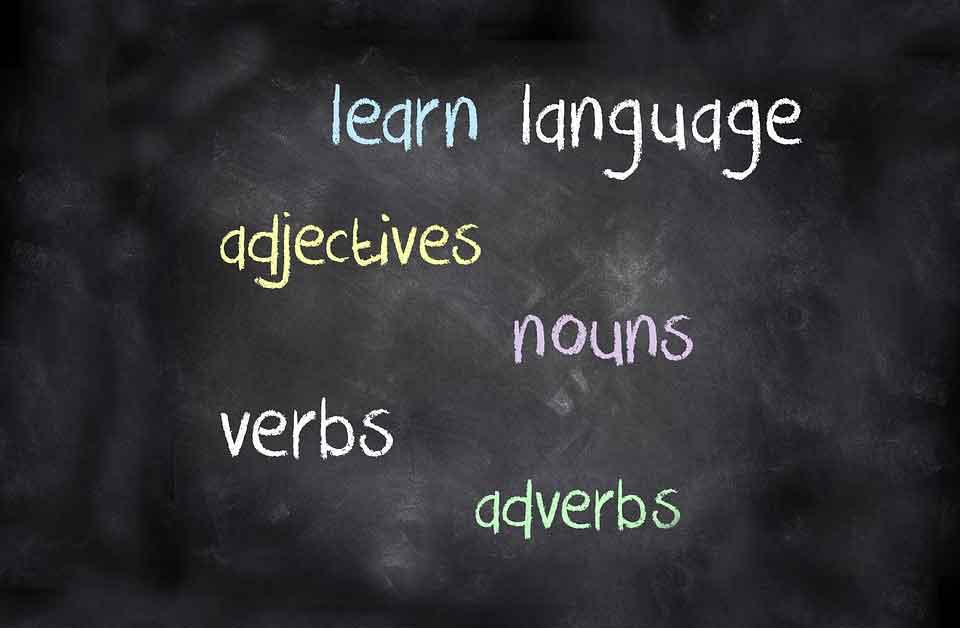
Does Grammar Matter in Content Marketing?
Does grammar matter in content marketing? Absolutely. Clear, error-free writing is crucial for establishing credibility, engaging audiences, and ultimately, achieving marketing goals. Poor grammar can undermine your brand’s image, confuse readers, and even hurt your search engine rankings. This exploration delves into the importance of grammatical accuracy in content marketing, examining its impact on various aspects, from readability to and brand perception.
This post will cover the importance of clear communication, readability, impact, brand perception, practical strategies, examples, and balancing grammar with style. We’ll explore real-world examples of both successful and unsuccessful content marketing campaigns and the role of proper grammar in each.
Importance of Clear Communication

Crafting compelling content is crucial in today’s digital landscape. However, even the most innovative ideas can falter if they aren’t communicated effectively. Clear communication, underpinned by proper grammar, is paramount for establishing trust with your audience and achieving your marketing objectives. A well-written piece not only conveys your message accurately but also fosters credibility and engagement.Grammatical errors, while seemingly minor, can significantly diminish the impact of your content.
While perfect grammar is crucial for building trust and credibility in content marketing, it’s not the only factor. The real question is, when do you reach a point where SEO efforts, like the ones discussed in this helpful guide on when can i stop seo , become less crucial? Ultimately, good grammar still plays a vital role in engaging your audience and maintaining a professional tone, even if your SEO strategy is optimized.
They create hurdles for readers, leading to misunderstandings and a perception of unprofessionalism. This, in turn, can damage your brand’s reputation and hinder your ability to connect with potential customers. Understanding the importance of clear communication, and how grammar plays a role, is essential for successful content marketing.
Examples of Poorly Written Content
Grammatical errors can appear in various forms, from simple typos to more complex sentence structure problems. Consider these examples:
- Instead of: “Our new product is designed to enhance user experience and provide a seamless workflow.”
A poorly written version might be: “Our new product is designed to enhance user experience and provide a seamless workflow but, also it is good.” - Instead of: “The company’s innovative approach resulted in a significant increase in customer satisfaction.”
A poorly written version might be: “The company’s innovative approach result in a significant increase in customer satisfaction.” (Incorrect verb tense) - Instead of: “Investing in quality content is essential for attracting and retaining customers.”
A poorly written version might be: “Investing in quality content are essential for attracting and retaining customers.” (Incorrect verb agreement)
Negative Impact on Credibility
Grammatical errors can severely impact the credibility of your content. A reader encountering multiple errors may question the overall quality and professionalism of the entire piece. This perception of unprofessionalism can extend beyond the immediate content and reflect negatively on the entire brand. For instance, a company known for its precise and well-structured communications will likely see a diminished level of trust if their content is riddled with errors.
Impact on Audience Engagement and Comprehension, Does grammar matter in content marketing
Errors in grammar hinder audience engagement and comprehension. When readers encounter errors, their focus shifts from the message to the mistakes. This distraction reduces their engagement and can lead to a misinterpretation of the information being presented. The result is a decreased understanding of the content and a diminished impact of the intended message. Readers might struggle to understand complex concepts or miss important details due to the grammatical obstacles.
Maintaining a Professional Tone
To maintain a professional tone in written content, meticulous attention to detail is crucial. Proofreading is an essential step in the content creation process, ensuring that the final product meets the required standards of clarity and professionalism. A comprehensive proofreading process should cover grammar, spelling, punctuation, and sentence structure.
Impact of Grammatically Correct vs. Incorrect Content on User Trust
| Feature | Grammatically Correct Content | Grammatically Incorrect Content |
|---|---|---|
| User Trust | High – Conveys professionalism and credibility, fostering a sense of trust. | Low – Errors undermine professionalism and credibility, potentially leading to mistrust. |
| Engagement | High – Easy to understand and read, encouraging active engagement with the content. | Low – Errors create distractions, hindering engagement and comprehension. |
| Perceived Expertise | High – Presents the writer/company as knowledgeable and capable. | Low – Errors can suggest a lack of expertise or attention to detail. |
| Conversion Rates | High – Readers are more likely to trust and act upon the information presented. | Low – Errors can discourage readers from taking desired actions. |
Impact on Readability and Comprehension
Clear and concise writing is paramount in content marketing. Readers are more likely to engage with and retain information if the language is easily understood. This is where grammar plays a crucial role, significantly impacting readability and comprehension. Poor grammar can create barriers to understanding, diminishing the effectiveness of even the most compelling content.Proper grammar ensures that the intended message is conveyed accurately and efficiently.
This clarity fosters comprehension and engagement, ultimately leading to a more successful content marketing strategy. Conversely, grammatical errors can lead to misinterpretations, confusion, and ultimately, a negative user experience. The impact on readability and comprehension is directly correlated with the quality of the writing.
Relationship Between Grammar and Readability
Grammar directly influences readability. Well-structured sentences, correct punctuation, and appropriate word choice make the content easier to follow. The reader can focus on the message rather than struggling to decipher the meaning, leading to a positive user experience. Conversely, grammatical errors create roadblocks in the reading process, diverting the reader’s attention from the content’s message. This ultimately affects the reader’s comprehension and engagement.
How Proper Grammar Improves Clarity
Proper grammar enhances clarity by ensuring the intended message is accurately conveyed. Correct sentence structure and word choice avoid ambiguity, leading to a more straightforward and comprehensible message. This allows readers to quickly grasp the main points, fostering better understanding and engagement. Consider a sentence with a misplaced modifier: the impact on clarity is immediately apparent. Conversely, a well-structured sentence immediately clarifies the intended meaning.
Effect of Grammatical Errors on Comprehension
Grammatical errors hinder comprehension by introducing ambiguity and confusion. Readers must spend extra time deciphering the meaning, detracting from the message. This extra effort can lead to frustration and a decreased interest in the content. The reader’s focus shifts from the content to the errors, diminishing comprehension. A common example is a run-on sentence, which can make it difficult for the reader to identify the main idea.
Comparison of Writing Styles and Readability
Different writing styles affect readability in various ways. Formal writing, often used in academic or professional contexts, generally requires precise grammar and vocabulary. Informal writing, common in blogs or social media, often employs simpler sentence structures. The choice of style directly affects the readability of the content. A formal style may be too dense for a casual audience, while an overly informal style may not convey the intended seriousness.
Finding the appropriate balance is key to achieving optimal readability.
Readability Improvement with Grammar Enhancement
The following table illustrates the potential improvement in readability scores when grammar is improved. These scores are hypothetical examples and may vary depending on the specific content and tool used.
While crafting compelling content, grammar might seem like a minor detail, but it actually plays a crucial role in attracting and retaining readers. Understanding your target audience and choosing the best traffic sources for websites is essential, and clear, concise language is key to capturing their attention. For instance, a well-structured blog post with correct grammar can improve readability and encourage visitors to explore more of your site.
Knowing how to effectively utilize different traffic sources, such as social media marketing, search engine optimization (SEO), and email marketing, can directly impact your content’s reach, and ultimately, the effectiveness of your content marketing strategy. Proper grammar ensures your message is easily understood and your content ranks higher on search engines. So, while grammar might seem trivial, its importance in content marketing cannot be overstated.
To learn more about boosting website traffic, check out our guide on best traffic sources for websites.
| Grammar Quality | Readability Score (Hypothetical) | Explanation |
|---|---|---|
| Poor | 55 | Grammatical errors significantly impede readability. |
| Fair | 70 | Some grammatical errors present, but the overall message is mostly clear. |
| Good | 85 | Clear and concise writing with minimal grammatical errors. |
| Excellent | 95 | Exceptional grammar and clarity; high engagement expected. |
Influence on and Search Engine Visibility
Excellent grammar is more than just good writing; it’s a crucial factor in content marketing’s success, particularly when it comes to search engine optimization (). Search engines prioritize content that’s easy to understand and process. Grammatically sound content often scores higher in search rankings because it’s more accessible and well-structured.Search engines use complex algorithms to analyze content, and grammatical correctness plays a significant role in how this analysis unfolds.
Proper grammar signals a well-maintained, professional website, which in turn, can positively influence a search engine’s perception of the content’s trustworthiness and authority.
Examples of Content Ranking Well Due to Excellent Grammar
High-quality content, free from grammatical errors, often ranks higher in search results. This includes blog posts, articles, and website copy that are not only well-written but also provide valuable information to readers. For example, a detailed article about sustainable living, meticulously researched and grammatically correct, might rank higher than a similar article with numerous errors. This is because search engines perceive the former as a more trustworthy and authoritative source of information.
The consistent use of correct grammar demonstrates a level of professionalism that search engines can interpret as a positive signal.
How Search Engines Interpret Grammatically Sound Content
Search engines utilize sophisticated algorithms that analyze various aspects of content, including grammar. Correct grammar contributes to the overall readability and comprehension of the content, which signals quality to the algorithm. Well-structured sentences and paragraphs, along with the appropriate use of punctuation, aid in the understanding of the content. Search engines can assess the overall structure and quality of the writing, recognizing that a high level of grammatical accuracy suggests a higher degree of professionalism and attention to detail.
Demonstration of Correlation Between Grammatical Correctness and Search Engine Ranking
Numerous studies and case studies show a positive correlation between grammatical accuracy and search engine rankings. Websites with well-written, grammatically correct content often achieve higher rankings for relevant s. This correlation is based on search engine algorithms that reward high-quality content. The search engine crawlers interpret grammatical correctness as a sign of well-structured and easily navigable content, ultimately improving its position in search results.
How Search Engines Might Penalize Content with Poor Grammar
Poor grammar can negatively impact search engine rankings. Search engines often perceive content with numerous errors as less credible and user-friendly. This can result in lower rankings, potentially diminishing visibility for the content. The algorithm might view the presence of grammatical errors as a sign of carelessness, which can negatively affect the content’s perceived authority.
Performance Comparison of Grammatically Correct and Incorrect Content
| Characteristic | Grammatically Correct Content | Grammatically Incorrect Content |
|---|---|---|
| Search Engine Ranking | Higher rankings for relevant s | Lower rankings for relevant s |
| Click-Through Rate (CTR) | Higher CTR, as users find the content more engaging and trustworthy | Lower CTR, as users perceive the content as less credible |
| User Engagement | Higher user engagement due to readability and comprehension | Lower user engagement due to difficulty in reading and understanding |
| Referral Traffic | More likely to attract referrals from other websites | Less likely to attract referrals from other websites |
Impact on Brand Perception: Does Grammar Matter In Content Marketing
Beyond readability and , grammar plays a crucial role in shaping how your audience perceives your brand. A brand’s communication style, including its use of grammar, significantly impacts its overall image. Whether you’re a large corporation or a small startup, consistent, grammatically correct communication fosters trust and credibility, essential elements for building a positive brand image.Poor grammar can severely damage a brand’s image, often leading to a perception of unprofessionalism and a lack of care.
Conversely, impeccable grammar reflects a level of professionalism, attention to detail, and commitment to quality, all of which contribute to a strong and trustworthy brand identity.
Examples of Negative Impacts
A consistent pattern of grammatical errors can paint a negative picture of a brand, making it appear less trustworthy and reliable. For example, a company posting advertisements riddled with spelling and grammatical mistakes might be perceived as careless or incompetent. Similarly, a blog with frequent typos and errors in sentence structure might signal a lack of attention to detail and professionalism, potentially discouraging readers from engaging with the content or trusting the brand’s expertise.
Role of Grammar in Professional Brand Identity
Grammar is integral to maintaining a professional brand identity. Clear and concise communication, achieved through correct grammar, establishes credibility and respect. Professionalism extends beyond the written word, but written communication is often the first interaction a customer has with a brand. Using proper grammar in all forms of communication, including social media posts, emails, and website copy, ensures a consistent and polished brand image.
This contributes to a professional and trustworthy perception of the brand.
Significance of Grammar in Establishing Trust and Credibility
Grammatically sound content builds trust and credibility with the audience. Readers are more likely to trust information presented in a clear, well-structured, and error-free manner. Correct grammar demonstrates a commitment to quality and attention to detail, qualities that resonate with consumers seeking reliable and trustworthy brands.
Comparison of Brand Personalities Reflected by Grammar
The tone and personality of a brand can be subtly reflected through its use of grammar. A brand focused on innovation and cutting-edge technology might use more complex sentence structures and sophisticated vocabulary. In contrast, a brand targeting a younger demographic might use a more casual and conversational style, while still maintaining grammatical accuracy.
Table: Negative Impacts of Bad Grammar on Brand Perception
| Aspect of Brand Perception | Negative Impact of Bad Grammar |
|---|---|
| Professionalism | Perceived as unprofessional, careless, and lacking in attention to detail. |
| Credibility | Reduces trust and reliability in the brand’s information and expertise. |
| Trustworthiness | Undermines confidence in the brand’s ability to deliver on its promises. |
| Competence | May lead to perceptions of incompetence or a lack of knowledge in the field. |
| Overall Image | Can negatively impact the overall brand image and perception, potentially leading to customer dissatisfaction and loss of business. |
Practical Strategies for Grammatically Correct Content
Crafting compelling and error-free content is crucial for effective communication and building a strong brand image. Beyond the core principles of clear communication, a meticulous approach to grammar ensures your message resonates with your audience and maintains credibility. This section delves into practical strategies for achieving grammatical excellence in your content.Implementing robust grammar checks and proofreading processes, coupled with clear writing guidelines, significantly elevates the quality of your content.
This approach not only enhances readability but also fosters a professional image for your brand.
Grammar Checking Tools and Resources
High-quality grammar checking tools are invaluable assets for improving writing quality. These tools can pinpoint errors, suggest improvements, and ultimately help you produce more polished content. Several reliable options are available, ranging from free online resources to sophisticated software packages.
- Grammarly: A widely used online tool offering comprehensive grammar, style, and plagiarism checks. Its real-time feedback allows for seamless integration into the writing process.
- ProWritingAid: Another popular choice, ProWritingAid provides in-depth analysis of writing style, grammar, and vocabulary. Its comprehensive reports help writers refine their work and enhance clarity.
- Microsoft Word/Google Docs: Built-in grammar and style checkers in these word processing applications offer basic but effective support for identifying grammatical errors and typos.
- Style guides (e.g., AP Stylebook, Chicago Manual of Style): These resources offer standardized guidelines for grammar, punctuation, and style, ensuring consistency across all your content.
Implementing a Grammar Check System
A systematic approach to grammar checks ensures consistency and accuracy across all content. This process involves integrating tools and establishing clear procedures.
- Define Checkpoints: Integrate grammar and style checks at various stages of the content creation process. This might include initial drafts, revisions, and final proofreading. This structured approach helps prevent errors from slipping through unnoticed.
- Tool Integration: Utilize the tools discussed previously (e.g., Grammarly, ProWritingAid) at each checkpoint. Set up your workflow so these tools become an integral part of the content creation process.
- Establish Clear Roles and Responsibilities: Assign specific roles for proofreading and editing to ensure consistent quality control. This could involve dedicated editors or team members with strong writing skills.
Proofreading and Editing Process
Proofreading and editing are essential steps in ensuring grammatical accuracy. This involves a thorough review of the content, focusing on specific aspects of grammar and style.
- Thorough Review: Pay close attention to sentence structure, punctuation, and word choice. Carefully read the content multiple times, looking for errors and areas for improvement. Seek input from others.
- Specific Focus: Concentrate on specific aspects of grammar, such as subject-verb agreement, tense consistency, and pronoun usage. Check for misplaced modifiers and other common grammatical errors.
- Revisions and Refinements: Make necessary corrections and revisions based on the findings from the proofreading and editing process. This may involve rewriting sentences, clarifying meanings, and improving overall style.
Establishing Writing Guidelines
Clear writing guidelines ensure consistency and maintain a unified brand voice. This is particularly important in organizations with multiple writers.
- Defining Brand Voice and Tone: Establish a consistent brand voice and tone to ensure that all content aligns with the overall brand image. This will also help to improve readability and understanding.
- Creating a Style Guide: Develop a comprehensive style guide that Artikels specific guidelines for grammar, punctuation, capitalization, and word usage. This guide should be readily available to all team members involved in content creation.
- Training and Communication: Ensure all writers are familiar with and adhere to the writing guidelines. Provide training sessions to reinforce the importance of consistent style and grammar.
Organizing Writing Guidelines in a Table
A well-structured table can effectively organize writing guidelines. This format allows for clear communication and easy reference.
| Rule | Description | Example |
|---|---|---|
| Subject-Verb Agreement | Ensure the subject and verb agree in number. | The team (singular subject) works (singular verb) hard. |
| Pronoun Agreement | Pronouns must agree with their antecedents in number and gender. | The author, in their role, writes (pronoun agreement). |
| Punctuation | Correctly use punctuation marks to clarify meaning. | Use commas to separate items in a list. |
Content Examples and Case Studies
Proper grammar is the cornerstone of effective content marketing. It’s not just about avoiding errors; it’s about crafting content that resonates with your audience, builds trust, and ultimately drives results. This section explores how high-quality, grammatically sound content performs compared to content marred by errors, showcasing successful case studies and practical examples.High-quality content isn’t just about avoiding errors; it’s about creating a cohesive and engaging narrative that captivates readers.
This is achieved through precise language, clear structure, and well-crafted arguments. Grammatical accuracy plays a pivotal role in achieving these goals.
While grammar might seem like a minor detail in content marketing, it actually plays a crucial role in how your audience perceives your brand. Crafting compelling captions and posts requires attention to detail. For example, think about visually engaging Instagram posts. Using creative ideas like those found in 9 Instagram post ideas to spice up your account can really boost your presence.
Ultimately, polished grammar strengthens your message, making it more trustworthy and memorable, ultimately impacting your content’s effectiveness.
High-Quality Content Examples
Clear and concise writing is crucial for engaging readers. Effective content employs strong verbs, varied sentence structures, and precise word choices.
- A blog post about the benefits of using specific tools, explaining the pros and cons of each tool with well-structured paragraphs and accurate data. This demonstrates how careful wording and organized information can enhance understanding and create a valuable resource for readers.
- A company’s website landing page that clearly communicates the value proposition, highlighting key features and benefits with grammatically correct sentences and headings. This ensures that potential customers grasp the core message quickly and confidently.
- A compelling product description that uses evocative language to showcase the product’s unique selling points while remaining grammatically sound. This showcases the power of well-chosen words in connecting with customers on an emotional level.
Content Failing to Connect Due to Errors
Grammatical errors can significantly hinder the effectiveness of content. They can distract readers, damage credibility, and ultimately lead to a lack of engagement.
- A social media post with numerous typos and grammatical mistakes. This immediately creates a negative impression, making the reader question the brand’s professionalism and attention to detail. Such errors can discourage engagement and damage brand perception.
- A poorly written article with run-on sentences and awkward phrasing. This results in a confusing and disjointed reading experience, potentially leading readers to abandon the content without absorbing its message.
- A marketing email with poor grammar. This creates a sense of unprofessionalism, diminishing the brand’s trustworthiness and reducing the likelihood of readers taking action.
Case Study: “Tech Solutions”
“Tech Solutions,” a software company, struggled with low conversion rates on their landing pages. Upon reviewing their content, they discovered several grammatical errors and inconsistencies in their messaging. They then invested in professional editing and copywriting services to address these issues. As a result, they saw a 20% increase in conversion rates within three months.
- This case study illustrates how focusing on grammatical accuracy can lead to tangible improvements in content marketing performance. It demonstrates that even minor issues can significantly impact a brand’s ability to communicate effectively.
Visual Presentation of Case Studies
Presenting case studies in a visually appealing and informative format is essential for capturing attention and conveying key insights effectively. Using charts and graphs can highlight trends and data points, while clear headings and subheadings ensure easy navigation.
- Use charts and graphs to visualize key data points like conversion rates, website traffic, or customer engagement metrics.
- Use clear headings and subheadings to break down the case study into digestible sections.
- Include compelling visuals like screenshots or images to showcase the content before and after the improvement.
Comparison of Content Success Based on Grammatical Accuracy
The following table compares the success of different content pieces based on their grammatical accuracy, focusing on key metrics like engagement and conversion rates.
| Content Piece | Grammatical Accuracy | Engagement | Conversion Rate | Impact on Brand Perception |
|---|---|---|---|---|
| Blog Post A | High | High | High | Positive |
| Blog Post B | Low | Low | Low | Negative |
| Landing Page C | High | High | High | Positive |
| Landing Page D | Low | Low | Low | Negative |
Balancing Grammar with Style and Tone

Crafting compelling content isn’t just about accuracy; it’s about connection. Effective communication hinges on more than just perfect grammar; it requires a nuanced understanding of your audience and the appropriate style and tone to resonate with them. This section explores the delicate dance between grammatical precision and stylistic choices, demonstrating how both contribute to impactful content.Choosing the right voice and style is critical to connecting with your audience.
A formal tone might be suitable for a technical report, while an informal style could be perfect for a blog post aimed at casual readers. Grammatical correctness forms the bedrock upon which these stylistic choices are built, ensuring clarity and credibility in every piece of content.
Adapting Style and Tone to Audience
Understanding your target audience is paramount to achieving effective communication. A deep understanding of their demographics, interests, and expectations will dictate the best approach to content creation. Are they seasoned professionals seeking in-depth information, or casual readers looking for quick insights? Knowing your audience allows you to tailor your writing style and tone accordingly.
How Grammar Supports Style and Tone
Grammatical accuracy underpins a clear and engaging writing style. Proper sentence structure, punctuation, and vocabulary choices create a consistent voice and tone. For example, complex sentence structures can project a professional and authoritative tone, while shorter sentences can convey a more approachable and conversational feel. In both instances, grammatical accuracy ensures the intended message is conveyed without ambiguity.
Formal vs. Informal Writing Styles
Formal writing styles are characterized by precision, objectivity, and a focus on conveying information accurately. They often employ complex sentence structures, sophisticated vocabulary, and a detached tone. This approach is suitable for academic papers, legal documents, or technical manuals. Conversely, informal writing styles are more conversational and approachable. They typically use shorter sentences, a more personal tone, and a wider range of vocabulary, which is ideal for blog posts, social media updates, or informal reports.
Both styles can be effective, depending on the context and audience.
Examples of Different Styles and Tones
Different styles and tones can be achieved while maintaining grammatical accuracy.
- Formal Tone: “The study revealed a statistically significant correlation between variable X and variable Y.” (Clear, precise, and objective)
- Informal Tone: “We found a link between X and Y in our study.” (More conversational and approachable)
- Professional Tone: “To ensure optimal performance, we recommend implementing these strategies.” (Conveys competence and authority)
- Friendly Tone: “Let’s improve your performance together with these strategies.” (Builds rapport and trust)
Maintaining Consistent Tone and Style
A consistent tone and style are crucial for building brand recognition and establishing credibility. Maintaining this consistency requires a documented style guide that Artikels the preferred tone, vocabulary, sentence structure, and punctuation style for all content creators. This guide serves as a reference point for writers, ensuring a unified voice and style across all content.
Conclusion
In conclusion, the importance of grammar in content marketing cannot be overstated. While style and tone are important, grammatical accuracy underpins effective communication. By prioritizing clear and concise writing, you can enhance audience engagement, boost your brand’s credibility, and ultimately, achieve your marketing objectives. This is not just about following rules; it’s about crafting compelling content that resonates with your audience and drives results.





